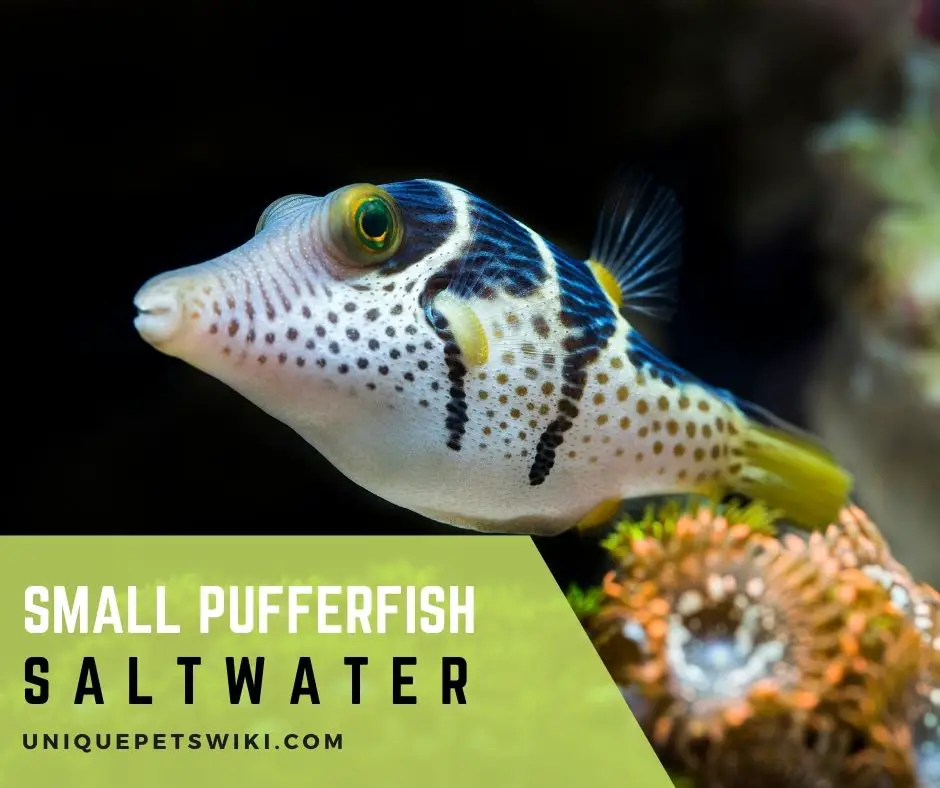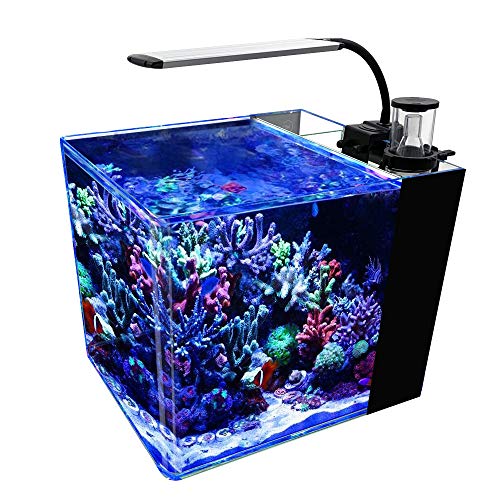Pufferfish are amazing creatures, and you will fall in love with small pufferfish in saltwater once you set your eyes on them.
There are several pufferfish species and a fascinating thing about them is their curious nature.
You can easily identify a pufferfish with its four teeth-like beaks. Another fantastic characteristic is their ability to puff their body when endangered. At first sight, pufferfish are slow, stunning, and gentle but can become one of the deadliest fish you can encounter once under threat.
Although pufferfish is among the most poisonous animals in the world to man, they can be kept as a pet. Keeping pufferfish is also an excellent choice for beginners to experts, as it is easy to care for them.
You will find many saltwater puffer fish types to keep in a reef. After researching saltwater puffers, some small saltwater puffer fish you can keep in your aquarium are stated below.
Contents
Figure 8 Puffer Fish
If you want to switch from freshwater to saltwater pets, figure 8 puffer is a perfect species to keep for beginners.
Figure 8 puffer fish is among the most stunning puffer species, and it keeps its lovely markings until adulthood. Another thing is that it is personable, friendly, and entertaining, and it will stay small even during adulthood.
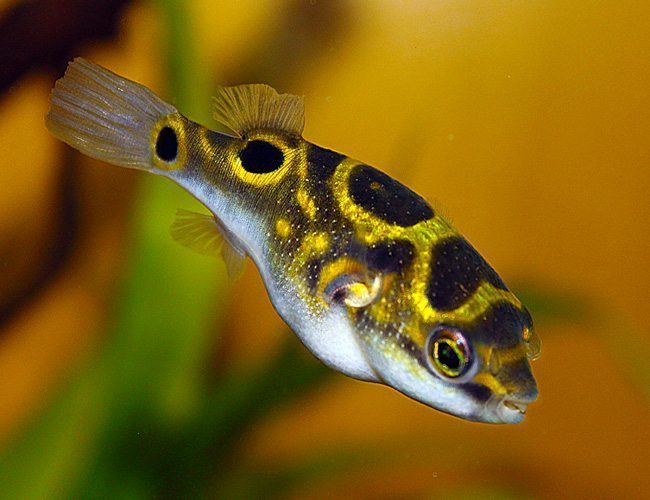
Figure 8 Puffers are native to Asia, and it is best if you keep it in a brackish environment.
It is usually aggressive towards its species and can grow to about 3 inches long. It has dark brown to black coloration with a white belly, and the body has yellow lines or spots.
You can keep figure 8 puffer fish in a 15-gallon aquarium without any hassle. It is best to add fake plants, sandy substrate, and varieties of rockwork in Figure 8 puffers aquarium to serve as a hiding place.
Figure 8 typically feeds on crustaceans and mollusks in the wild.
You can feed them meaty and hard-shelled foods like crayfish, daphnia, clams, krill, crickets, scallops, oysters, shrimp, plankton, worms, and snails. The reason for including hard-shelled foods is mainly to keep their teeth from becoming overgrown.
Last update on 2022-12-29 / Affiliate links / Images from Amazon Product Advertising API
Striped Burrfish
Striped burrfish are considered to be among small to medium-sized saltwater pufferfish that you can keep as pets.
It has a short, round, yellowish-green body with dark and wavy stripes. Stripped puffers also have short, sharp spines all over its head and body. It looks similar to porcupine fish but has shorter, less sharply pointed, and immovable spines on its body.
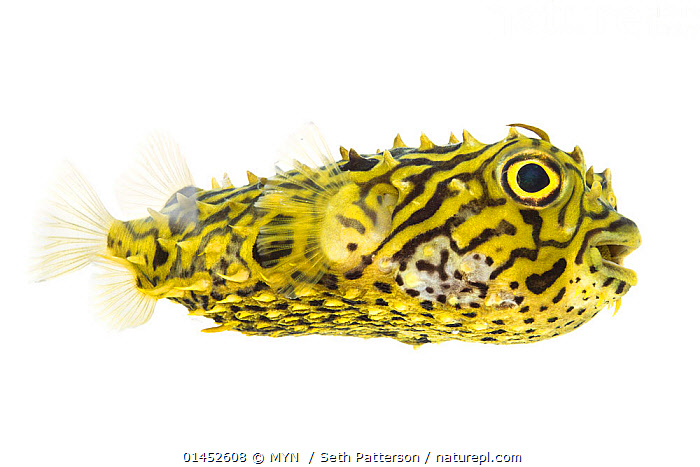
In the wild, you will find striped burrfish in the tropics of the western Atlantic Ocean, along the Atlantic coast of North America, and sometimes in the far north as Cape Cod. It can also grow to about 10 inches in length once it matures.
Although many people consider pufferfish carnivorous, it occasionally grazes on algae.
The best thing about burrfish is that it is not picky and will feed on anything that can fit its mouth. In the wild, it will feed on crustaceans, shellfish, and hard-shelled foods like the snail.
Other foods it will eat are jellyfish, larval eels, algae, hermit crabs, and barnacles. Burrfish use their powerful beak-like jaws to crush and consume prey or eat their prey whole.
Valentin’s Sharpnose Pufferfish
The Valentin’s Sharpnose pufferfish is also known as saddle puffer, and you will find them in tropical and subtropical areas surrounded by coral reefs. It is common in the shallow seas over the Indian and Pacific Oceans and moves in groups ranging from about 10 to 100.
When it is not moving around, the school of Sharpnose puffers takes shelter around the coral heads around 150 feet in the water.

Sharpnose pufferfish are usually small in size as they can grow to about 4.5 inches in length. You can easily identify them because of their yellowfins with their wide and black stripes and dark spots on the white flesh. Another distinctive feature is its sharp nose, which is where it is named.
Unlike most of the pufferfish species, Sharpnose pufferfish are omnivorous. It feeds on worms, corals, and other small organisms, and numerous types of algae.
Baby porcupine pufferfish
If you are seeking a fairly demanding and large fish with a fascinating personality, porcupine puffers are the perfect fish for you. It is called porcupine pufferfish because of its iconic spiky body used to defend against prey.
Another exciting thing is that the fish will learn about their owners and how to get their attention. It is also among the few pufferfish species that are considered to be reef safe. You can easily care for porcupine pufferfish by selecting the right tank mates, tank layout, and clean-up crew.
Porcupine pufferfish have similar care to numerous saltwater fish; you will need a big aquarium to keep them. It can also handle changes in a tank’s temperature, salinity, and pH than other fish.
It is very sturdy, and if you can maintain a healthy aquarium, you will be able to keep them for many years.
Since it is slow-moving in the water, it is easy to catch, making it readily available compared to other saltwater fish. Some of the things you need to know about baby porcupine pufferfish before getting them are stated below.
Social Behavior of Porcupine
In the wild, porcupine fish are solitary animals, and they are usually found living alone. You will only find them in two only when it wants to mate. Once they finish mating, their eggs will float along in the water without any care from the adults.
After hatching, baby porcupine fish will be carried along by currents until they can swim.
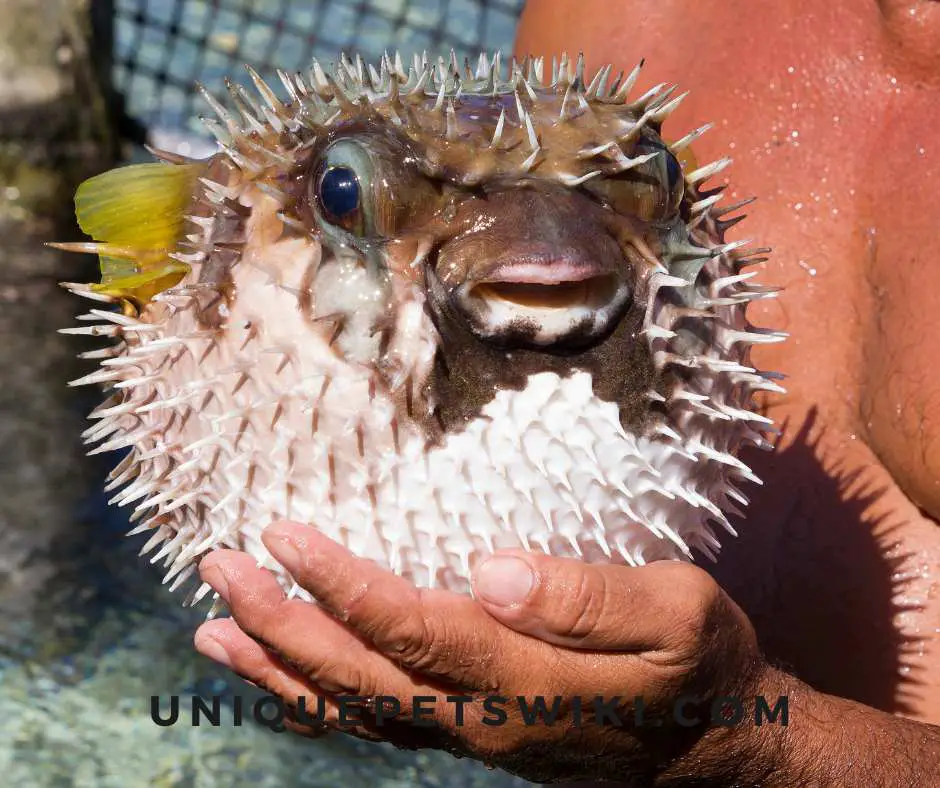
Size of baby porcupine pufferfish
Porcupine pufferfish usually get big very fast. It can grow to about 12 inches in length with large rounded heads and pale bodies. It is often covered with sharp spines that will lay flat against their bodies until they sense any danger. Baby porcupine pufferfish are usually about 1-2 inches long and grow quickly.
What do baby porcupine puffer fish eat?
Porcupinefish are carnivorous nocturnal feeders, and they feed on crustaceans and small pieces of fresh shrimp. You can feed baby porcupine pufferfish with frozen krill, shrimp, brine, and bay scallops.
Note: porcupine fish are messy eaters, and you filter their tank or net/vacuum out excess foods from their tank after feeding. Filtering the tanks is for the prevention of algae blooms in their tank.
Tank size
You can keep baby porcupine pufferfish in a 15-gallon tank for months since it is still small and has plenty of room. But once, you should ensure you upgrade its tank after 1-2 months as it will be bigger.
Adult porcupine pufferfish can grow up to 12 inches; you will need about 100 gallons of the aquarium to keep it. Most hobbyists also advise against keeping multiple porcupine puffers in a tank.
Last update on 2022-12-30 / Affiliate links / Images from Amazon Product Advertising API
Porcupine Puffer Tank Needs
There are some special requirements that most tanks will follow if you want to keep a porcupine pufferfish.
Copper level
Porcupine puffers do not have scales and can get sick easily if you keep them in a tank with too much copper. You need to make sure their tanks have a low level of copper. Some of the steps you can use to keep the copper level down in your aquarium are stated below.
- Do not use hospital tank water for your aquarium.
- Always feed your fish with lower copper content foods.
- Do not use water sources from copper pipes.
Iodine level
Firstly, Iodine is a trace element that can be found in many tanks.
Also, iodine is usually introduced to a tank through water changes and also with supplements.
Porcupine puffers can live in a tank with little or no added iodine if the water is changed more than once a week.
However, if you do not change the water, you must add iodine to the tank. A deficiency in iodine in a tank with porcupine pufferfish can lead to thyroid issues and lockjaw.
